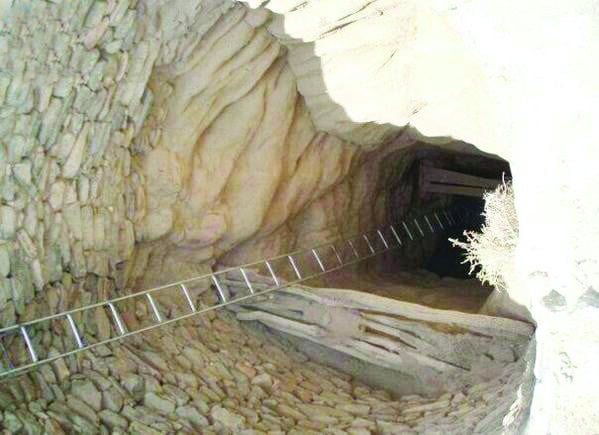
Ababeel story is described by the Quran in Surah Al-Fil, Many armies tried to conquer Makkah but indeed Allah is the sole protector of this sacred place.
King of Yemen and Ethiopia, his name was Abraha. He made a Church in the city called Sanaa but when he got to know that people are traveling miles away to perform Umrah and Hajj and do Tawaf he got jealous.
Abraha wanted people to make Hajj at Sanaa. But this made Muslims of Quraish: an Arab people of which Muhammad was a member and which from the 5th century was distinguished by a religious preeminence associated with its hereditary provision of the pre-Islamic custodians of the Kaaba at Mecca The Quraysh was an Arab tribal confederation that historically inhabited and controlled the city of Mecca and its Ka'aba. In the late 6th-century More furious, and Muslims disowned whatever he was saying which made Abraha go crazy as Muslims had kicked his idea of performing Hajj in his Church.
To take revenge on Muslims, he builds an army having a huge number of Elephants, and charge the army towards Makkah. He had an Elephant whose name was Mahmood, it was huge and Abraha was riding it himself. After reaching Makkah, his attack was successful furthermore, the camel of Abdul Muttalib (RA) was also caught by his Army.
Abdul Muttalib (RA) is the grandfather of Prophet Muhammad (PBUH)
At that time Abdul Muttalib (RA) was the leader of Makkah and the custodian of Holy Mosque. He went to Abraha’s army and asked for the camel they captured, after listening this Abraha was very shocked that they are here to attack Kaaba and Abdul Muttalib (RA) is just asking for Camel. They give Abdul Muttalib (RA) his camel, and he left. Before leaving Abdul Muttalib (RA) told Abraha that Allah has promised to protect his house (Kaaba) so he will protect it.
After coming back, Abdul Muttalib (RA) told his nation to hide in caves. Abdul Muttalib (RA) went to the door of Holy Kaaba and make dua to protect the people in caves.
Next day, Abraha’s army was ready to attack the Kaaba but a very strange thing happened that none of the Elephants stood up!
Then a flock of Ababeel came, they were sent by Allah and they had free gavels each, two in their claws and one in their beak.
They flew over the army of Abraha and threw gravels on his army. These tiny objects, by the command of Allah, became so lethal that it pierce their bodies of that army. The whole army was in shambles as they wanted to save their own lives, but Allah had commanded that each gravel will fall onto each person, and just in a moment the whole army was dead.
Recently the stone threw on that army was found in Saudi Arabia!
Saudis retrace route of Abraha’s army that came to destroy Kaaba
source https://www.arabnews.com/saudi-arabia/news/641556

The incident of Abraha Al-Ashram, king of Abyssinia, attacking Makkah to destroy the Kaaba, and to change its location over to his kingdom to draw the annual pilgrims of Arabia to come to his kingdom instead, is a locally (in Arabia) documented historical fact. It is also well documented that his attack and mission were a failure. By the way, king Abraha’s attack on Makkah happened shortly before the birth of Prophet Muhammad, peace be upon him. The following article clearly and indisputably prove this:
A group of young Saudi history enthusiasts has retraced the path of the People of the Elephant who tried to destroy the Holy Kaaba centuries ago.
The Holy Qur’an, in a short chapter, briefly refers to the story of the army of elephants led by Abraha Al-Ashram, who was a governor of Yemen. God destroyed Abraha and his army that included 13 elephants, by sending flocks of birds (mentioned as Ababeel) that dropped small stones on them.
“There never fell a stone on a soldier except it dissolved his flesh and burst it into pieces … Abraha Al-Ashram fled while his flesh was bursting into pieces and died on the way back to Yemen,” said the 14th century scholar Ibn Kathir, an authentic Qur’an commentator.
During their tiring journey across mountains and rough terrain, the young Saudi men took photographs of important landmarks, beginning from north of Najran, to the east of Asir, and then east of Baha.
Some of the most important historical sites along the way included inscriptions of elephants on rocks in the Al-Qahr Mountain, southeast of Tathlith; an old well in Hafaer, east of Asir; and a paved road near Kara in Aqeeq principality in the Baha region.
Mohammed Al-Amry, head of the geology department at King Saud University, said he had seen the path of Abraha and his army in Tathlith and Baha. “The army had passed the Arabian shield region comprising rocks and there were writings in the Humairiya language on some mountains,” he said.
According to historical Islamic sources, Abraha, who was a Christian, had thought of building a church similar to the Kaaba in Sanaa. He wanted the Arabs to perform the pilgrimage in Sanaa instead of Makkah, with the intention of diverting trade and benefits to Yemen. He presented the idea to the then king of Ethiopia who agreed to it.
Abraha built the church but the Arabs refused to come for pilgrimage in Sanaa. This infuriated him, prompting him to form an army to invade Makkah and demolish the Kaaba. He defeated all Arab armies on the way until he reached Makkah where he was attacked by the flocks of birds sent by the Almighty.
Post Disclaimer | Support Us
Support Us
The sailanmuslim.com web site entirely supported by individual donors and well wishers. If you regularly visit this site and wish to show your appreciation, or if you wish to see further development of sailanmuslim.com, please donate us
IMPORTANT : All content hosted on sailanmuslim.com is solely for non-commercial purposes and with the permission of original copyright holders. Any other use of the hosted content, such as for financial gain, requires express approval from the copyright owners.
 Sri lanka Muslims Web Portal Sri Lanka Muslims News Center
Sri lanka Muslims Web Portal Sri Lanka Muslims News Center
 Donate
Donate


